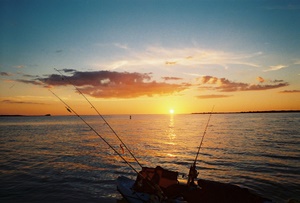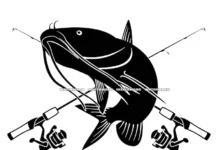Following The Sun Helps In Winter Months
FRANK SARGEANT
Published: Dec 28, 2005
I get a lot of letters at this time of year from anglers wondering where they can go to find the fish that were so easy to catch in summer and fall.
Sometimes, I wish I knew.
But in general, cold-weather fish are not all that hard to find if you follow a few basics.
First, fish are like people when it gets cold. They want to get warm. Doug Hannon of Odessa, nationally known as “The Bass Professor,”, devised a theory that the northeast shore of any lake is likely to be a great producer in winter and early spring because those waters are where the sun strikes the longest with the angle of the Earth in winter. He has proven the theory works by catching hundreds of bass in excess of 10 pounds over the last several decades.
And not surprisingly, the same thing works in saltwater. Find a quiet bay with mangroves along the northeast shore and you can just about bet that on a sunny afternoon after a cold front passes, there will be redfish for sure and maybe trout and snook as well lying along that shore in water barely deep enough to cover their backs, soaking in the heat. If the bay has a black mud bottom, so much the better – the mud acts as a heat sink and makes the area even warmer.
You will see plenty of fish in this sort of water, but catching them is no easy matter. Because the water is shallow and clear, they can see you as well as you can see them. It takes judicious use of a push pole and some long casts with light baits to get a bite.
Live shrimp is a good bet, or a soft jerkbait on a 4/0 dogleg hook rigged weedless. A well-cast streamer fly also can do the job.
It’s also possible to find fish “sunning” in other areas; the shores of the Homosassa River, for example, have a few little coves where reds are known to move up out of the depths of the river on a sunny day following an icy night.
Barring the sunshine, fish often seek spring outfalls to keep warm in the sort of weather we’ve had lately. The Alafia River, for example, has several spring creeks flowing into it upstream of U.S. 301, and there are always snook below those flows in winter. And some rivers are entirely made up of spring water-the Homosassa, mentioned above, as well as the Crystal, Chassahowitzka and Weeki Wachi, all maintain temperatures of around 70 degrees almost all the way to the Gulf, which means that fish of all species can be found in holes far up these rivers.
The fact that the water is entirely fresh as you move upstream does not seem to bother most species; jacks, mangrove snapper and snook, in particular, seem to take to fresh water well, and tarpon live a good portion of their lives in nearly fresh water by preference.
Most anglers are well aware of the attraction of the 80-degree water coming out of big powerplants like the TECO plant at Big Bend; in that outfall, you’ll see snook, tarpon, jacks, redfish, trout and even Spanish mackerel and cobia at this time of year. And a nice thing about that area is that you can walk to it from the park on the north end of Apollo Beach, and fish from a sandy beach (To be sure, it’s easier to fish from a boat, but plenty of fish are caught from the shore.).
Snook also hang around docks and other cover in rivers fed mostly by ground water, including the Little Manatee, Manatee, Peace and Myakka. These rivers are warmer than the bays because of their nearly-black water, which soaks up sunshine, and they attract lots of fish from November through March.
Finding which docks hold fish is a matter of putting in your time, but one efficient approach is to troll a flashy chrome spoon or a wobbling plug past the docks. Most fish will ignore this presentation, but when you do catch a snook this way, you can be pretty sure there is a real wad of fish under that particular cover, and you can go back to work on them with live shrimp or jigs.
The hotspots can be widely separated, but when you find one, you may catch dozens of fish without moving the boat – it makes the chilly toes and aching fingers well worth it.
- Jay Mastry - March 26, 2024
- Captains Corner, Gorta - March 23, 2024
- Dave Zalewski - March 12, 2024











